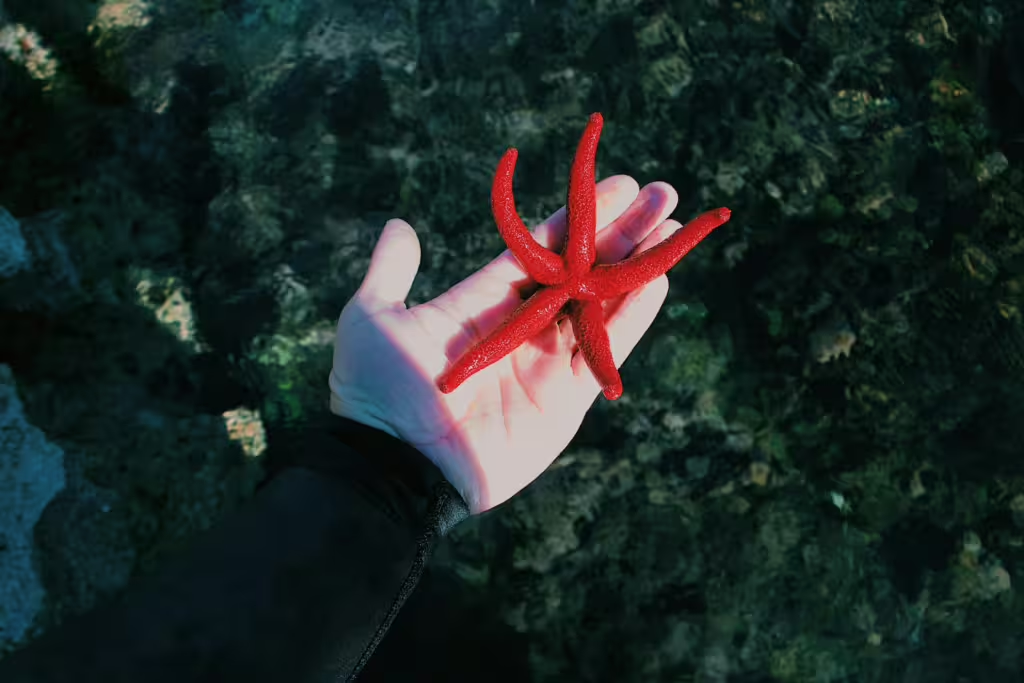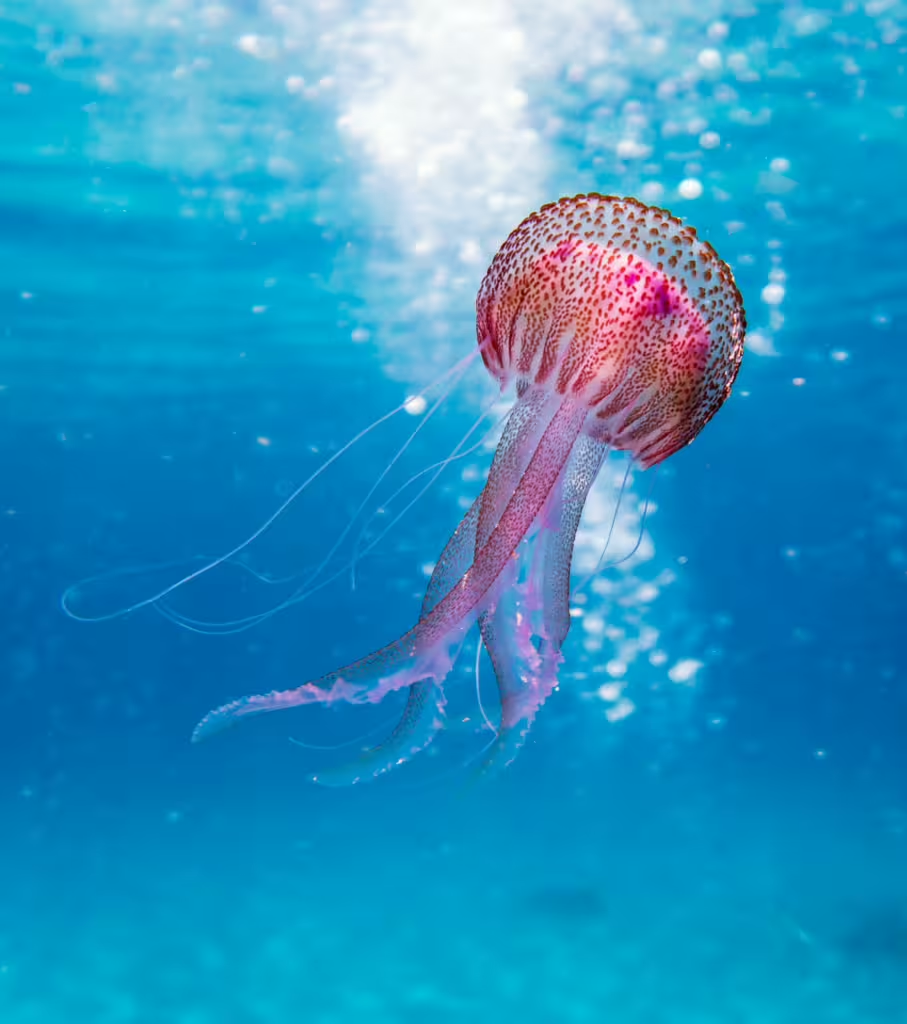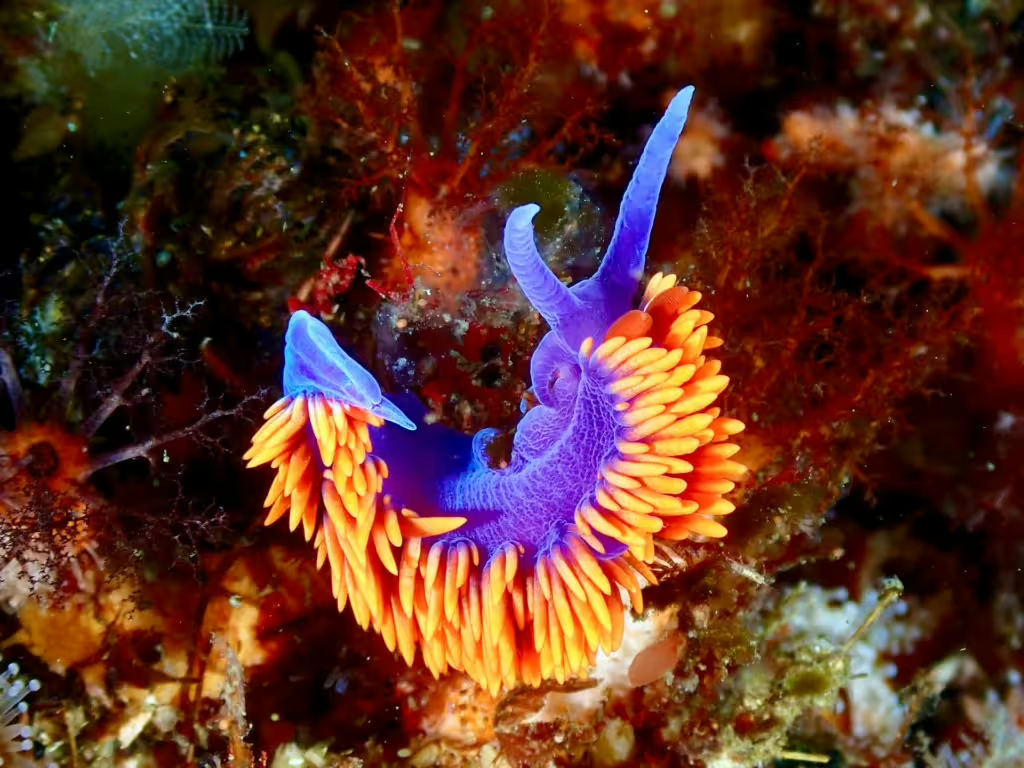We’ve come a long way since we began counting down the different parenting methods of the plant and animal kingdom. We’ve spoken about birds, terrestrial predators, and even plant seeds themselves, but today we depart to one of the few unexplored regions still left on this planet; the ocean. Few biomes are as strange, diverse, and awe-inspiring as the ocean and that is partly because of the alien critters that live there.
All across our world, life has evolved. Many species have gone from simple, single-celled organisms to some of the most intelligent, immense, creatures on the planet. Today we will talk about creatures that are just a step or so above the former, invertebrates. Marine invertebrates—animals without backbones—make up the vast majority of ocean life and their methods of reproduction are among the most inexplicable in the animal kingdom. They also run the gamut when it comes to size, ranging from tiny plankton to literal colossal squids.
In this article, we will explore the expectation-defying reproduction methods of mollusks, echinoderms, and cnidarians. As we dive down deep, readers will soon find that each group offers its own surprising adaptations and will invariably show how, even after billions of years of evolution, invertebrates continue to stretch the very boundaries of biology.

Mollusks: Playing the Odds in Their Favor
The first group we aim to discuss is one that most readers will be familiar with; even if they only recognize its members from looking at a seafood menu. Mollusks—a group that includes clams, octopuses, squid, and snails—are among the most diverse marine invertebrates on Earth. We say this, because the member of their group include a number of different body types, diets, behaviors, feeding methods, and reproductive strategies.
Broadcast Spawning in Bivalves
Clams, oysters, and mussels—all of which are bivalves—reproduce through something called broadcast spawning. This is the process in which males and females release eggs and sperm into the water at the same time. Fertilization then happens externally, and rather haphazardly, we might add. When life has quickened, the ocean currents carry the fertilized eggs away into their churning eddy. The thing is, the timing of all this is particularly critical.
In order to make sure they do all this within the proper timeframe, bivalves will often synchronize their spawning using environmental cues like temperature changes, lunar cycles, or tides. In doing so, they vastly increase the odds of their eggs being fertilized. Take for example, an oyster bed during a full moon. In these moments, the thousands of oysters will simultaneously release millions of gametes in perfect unison, creating “clouds” of sperm and eggs that are so thick, they are actually visible in the water. The resulting larvae, called veligers, then drift as plankton for weeks or months before eventually settling on the ocean floor as all future oyster so. In time, they too will undergo a metamorphosis and turn into adult clams or oysters.
Love Darts and Hermaphroditism in Sea Slugs
Other mollusks utilize a more…visceral, personal method of reproduction. Nudibranchs (sea slugs), for instance, are simultaneous hermaphrodites. This means that each individual nudibranch has both male and female reproductive organs. This is where things get personal, mind you. When the slugs meet, they will engage in something called reciprocal mating; essentially the art of exchanging sperm with one another using their “love darts”, calcareous spines they use to stab their partners during the courtship ritual. Why do they both do it? Well, like the oysters and clams, it’s a way to double the odds of one of them getting pregnant. If both end up full of babies, everybody wins.
Octopus and Squid: Short Lives, High Stakes
Cephalopods like octopuses and squid are a bit more evolved than that, and as such, exemplify some of the most dramatic reproductive strategies in the ocean. Sadly, most members of this mollusk subfamuly reproduce only once in their lifetime—a strategy known as semelparity. The process is, as one might expect, simple and a little messy. Male octopuses use a specialized arm called a hectocotylus to transfer sperm packets, into the female’s mantle cavity.
Once the female is pregnant, she lays thousands of eggs in a small, secure den, where she will care for them, slowly starving to death until they hatch. Octopi don’t care about much in this world, but they do care about their babies. Squids are similar but tend to engage in more social affairs of courtship. They often spawn in massive aggregations called, appropriately, squid blooms. In this, let’s face it, orgy, male squids will pass sperm packets to multiple females in quick succession, trying to get as many of their little buddies out there as they can. After spawning, most squid also die, making reproduction the final and likely fun, act of their lives.
Echinoderms: Cloning Kids
Echinoderms—sea stars, sea cucumbers, and sea urchins—also rely heavily on external fertilization, for the most part. That said, their reproductive abilities go far beyond releasing gametes into the water en masse.
Broadcast Spawning and Larval Drift
As with the mollusks, most echinoderms practice broadcast spawning, releasing eggs and sperm into the water in the hopes that fertilization will occur in great numbers. Some species, like crown-of-thorns starfish, for example, release millions of gametes during spawning events that coincide with lunar cycles or specific seasonal temperature changes. In either case, the bevy of fertilized eggs develop into free-swimming larvae, known as bipinnaria (for sea stars) or pluteus (for sea urchins). Those teensy stars drift along on ocean currents for weeks, avoiding being eaten as best they can, before finally settling onto the seafloor. In time, they too will metamorphose into their recognizable adult forms.
Asexual Reproduction and Regeneration
Another thing that echinoderms are famous for is their ability to regrow limbs, basically regenerate when part of them is bitten off. Now, this is all well and good for most echinoderms, but in some cases, the ability to regenerate is co-opted into reproduction. Certain sea stars, for example, can reproduce asexually by fission, splitting their bodies in half…on purpose. The crazy thing about this method that it’s basically cloning. Each half regenerates the missing parts, resulting in two genetically identical sea stars!

Cnidarians: Budding Babies
Even readers with a background in biology might struggle to categorize the next groups of ocean invertebrates. Cnidarians, a group that include jellyfish, corals, and sea anemones, are among the most alien creatures on the planet. Each of them is unique in their own way and each of them displays their own remarkable reproductive flexibility.
Alternating Generations in Jellyfish
When it comes to gender, jellyfish are kind of all over the place. In fact, many undergo alternation of generations, essentially cycling between asexual and sexual stages. The adult medusa, what we typically recognize as a jellyfish, reproduces sexually. It does this by releasing sperm and eggs into the water which then get fertilized in due course. After fertilization, the resulting larvae flit around for a bit before settling on the ocean floor and developing into polyps, the adolescent form of the jelly. These polyps also reproduce, however. They do this asexually by budding, basically creating clones of themselves. They can also produce new medusae in this way that then detach and grow into adult jellyfish. Why do they have such differing reproduction strategies, you may ask? Well, for invertebrates, it’s all a numbers game. This dual-reproduction process allows jellyfish populations to bloom rapidly under favorable conditions.
Immortal Jellyfish
If you’ve been living under a rock for the past few years, you may not have heard of the so-called Immortal jellyfish. This cnidarian has one of the more powerful and most misunderstood reproductive methods known to man. When faced with environmental stress, old age, or injury, this tiny jellyfish can essentially go backwards, basically reversing its life cycle. When it does this, the adult medusa jellyfish reconfigures its body back into a polyp. It is called transdifferentiation and so far, the immortal jellyfish is the only animal on that planet that is capable of doing it. This adaptation effectively allows the jellyfish to turn back time and start its life over again, making it biologically immortal; at least unless it gets eaten or overstressed. Still, it’s pretty darn amazing.
Sponges: Reproduction Without Organs
We finally come to those most unusual undersea creatures, the sponges. Yes, the real-life relatives of your child’s favorite Nickelodeon cartoon are among the simplest multicellular animals on the planet and the most remarkable in terms of reproduction. After all, these “animals” lacking organs, nerves, or even true tissues, so one might then infer that their reproductive strategies are similarly complex.
Broadcast Spawning and Internal Fertilization
Like the mollusks we mentioned earlier, sponges need to play the odds to get their seed out into the ocean. They do this by broadcast spawning, releasing sperm into the water and hoping that the other sponges nearby will grab onto some. If they do, the receiver sponges then filter the sperm in through their feeding pores, fertilizing their eggs internally. Once fertilized, the sponge will releases free-swimming larvae into the surrounding water, which eventually settle and grow into new sponges.
It should also be noted that some sponges also reproduce by way of budding or fragmentation, just as the echinoderms do, And why not? If it works for a creature as weird as a starfish, why wouldn’t it work for an even stranger animal?

True Investigator Says…
As you can see, the ocean world is full to the brim with amazing aliens. As we return to the surface, we are reminded that the adaptations and strategies used by these marine marvels are more complex than any of those found on land; they kind of have to be. These creatures lack the forethought or physical abilities of higher-evolved beasts, so they have found simple, effective ways of carrying their genes out into the sea.
Whether cloning themselves from additional bits, spouting out clouds of sperm, or starting life over from the beginning; invertebrates have found remarkable ways to reproduce. In many ways, the reproductive strategies of marine invertebrates are as diverse and mysterious as the ocean itself, and there are so many more to investigate.
Discover more from TrueInvestigator
Subscribe to get the latest posts sent to your email.


